With its colorful design and complex mechanics, it can seem daunting to even begin trying to solve the puzzle. However, despite the initial difficulty, learning to solve the Rubik's Cube is a rewarding and fulfilling experience. With practice and dedication, anyone can master Rubik's Cube and develop a deep understanding of its mechanics. As it happened to me, I got an OLL and PLL skip and three easy Four-Mover F2L cases, so I thought it was very easy, and when I tried to solve it again, I wondered why the method didn't work! When I really understood OLLs and PLLs, I realized why it doesn't always work. The reason is that you don't always get OLL/PLL.
It might seem easy to solve if you get a lucky scramble which gives you F2L pairs skip and OLL/PLL skip.
You can get faster at cubing using a variety of algorithms and techniques, and practice will help you determine which one works best for you. Some of the main methods are “Roux, CFOP, ZZ, Petrus, etc.,” with lookahead. If you are wondering what these words are, just stay on and continue reading.
Now let’s walk through the different methods
Method 1 : CFOP

The CFOP method (Cross – First 2 Layers – Orienting Last Layer – Permuting Last Layer), sometimes known as the Fridrich method, is one of the most commonly used methods in speedsolving a 3×3 Cube. This method was first developed in the early 1980s combining innovations by a number of speedcubers.
The method works on a layer-by-layer system, first solving a cross typically on the bottom, continuing to solve the first two layers (F2L), orienting the last layer (OLL), and finally permuting the last layer (PLL).
The major innovation of CFOP over beginner methods is the use of F2L, which solves the first two layers simultaneously.
Learn CFOP: How To Be Sub-30 On 3x3 cube | Easiest 30 second solve | CFOP | Sarthak Masta | Cubelelo
The Cross
The "Cross" method is one of the first steps in solving a 3x3 Rubik's Cube, where you solve the first layer of the cube by creating a cross shape on the bottom face using the four edge pieces that belong to the first layer.
Many speedcubers usually solve the cross on the bottom side to avoid cube rotations and to get an overall better view of the essential pieces needed for the next step.

First Two Layers (F2L)
In F2L, corner and edge pieces are paired up and later moved to their correct location. There are 42 standard cases for each corner-edge pair including the case where it is already solved. It can also be done intuitively.
 First Two Layers (F2L) Solved
First Two Layers (F2L) Solved
Orientation of the Last Layer (OLL)
This stage involves manipulating the top layer so that all the pieces therein have the same color on top while leaving the sides of these pieces incorrect. This stage involves a total of 57 algorithms. A simpler version, called "two-look OLL" orients edges first and corners afterward. Algorithms are performed twice for this version. It uses ten algorithms, three for edge orientation and seven for corner orientation.
 Orientation of the Last Layer (OLL) Complete
Orientation of the Last Layer (OLL) Complete
Permutation of the Last Layer (PLL)
The final stage involves moving the pieces of the top layer while preserving their orientation. There are a total of 21 algorithms for this stage. They are distinguished by letter names, sometimes based on what they look like with arrows representing what pieces are swapped around (e.g., A permutation, F permutation, T permutation, etc.). "Two-look" PLL solves the corners first and edges separately. It uses six algorithms, two for corner permutation and up to four for edge permutation. Also, a U-perm can be repeated if the user wishes to use even fewer algorithms at the expense of usually faster solve times.
There also exist many advanced extension algorithms sets to be used alongside CFOP, such as COLL, Winter Variation, VLS, ZBLL, and more. However, it is unnecessary to learn them to solve the cube or use the CFOP method. I use CFOP because, after most of the algorithms, you get back to home grip.
F2L is a crucial step to speedsolving as this is where the majority of time gains are realized. The reduced solving time can be attributed to having a view of the top side of the Rubik’s cube, planning the next step ahead in time, and improved cubing techniques that eliminate unnecessary rotations. There are 41 possible variations for the corner edge positions, which can be solved intuitively without the need for algorithms. This method is great for SpeedSolving for beginners, But you can try different methods too!
Method 2: Roux Method
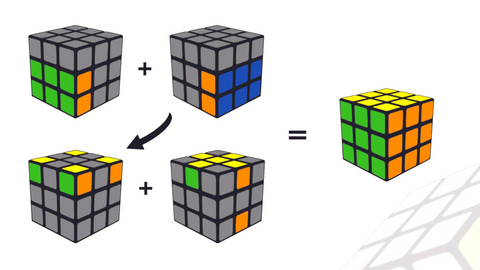
Roux is a speedsolving method discovered by Gilles Roux in 2003. The word is pronounced as “Roo”, as “x” is silent. This method uses the “block building” and “corners first” strategies. It features a low number of movements, reduced hand rotations, and is suitable for one-handed solving and it has some M moves too (M Means Middle Layer Moves)
Steps
- Build a 1x2x3 Block anywhere on the cube.
- Build a second 1x2x3 block opposite of the first 1x2x3 block, without disrupting the first 1x2x3 block. After this step, there should be two 1x2x3 blocks: one on the lower left side, and one on the lower right side, leaving the U slice and M slice free to move.
Steps 1 and 2 are referred to as the First Two Blocks (Extension)
- Simultaneously orient and permute the remaining four corners on the top layer (U-slice). If performed in one step, there are 42 algorithms. This set of algorithms is commonly referred to as CMLL. It is also possible to use COLL and some other CLL algorithm sets. However, these sets aren't as efficient as CMLL because they preserve pieces that CMLL does not. The remaining four corners can also be solved in two steps, which require fewer algorithms.
4a. Orient the 6 remaining edges using only M and U moves (UF, UB, UL, UR, DF, DB need to be oriented correctly).
4b. Solve the UL and UR edges, preserving edge orientation. After this step, both the left and right side layers should be complete.
4c. Solve the centers and edges in the M slice. This step is sometimes also called L4E or L4EP. see Last Six Edges.
Steps 3 and 4 are referred to as the Last 10 Pieces. You start by solving a 1x2x3 block on either the left or the right side, followed by an identical block on the opposite side. Thereafter you permute and orient all remaining last layer corners using CMLL. From here, only M and U-turns are made. The next step consists of orienting all remaining "bad edges". After orienting the "bad edges" you solve the two edges simultaneously which belong above the 1x2x3 blocks. The final and shortest step is permuting the final 4 edges.
Method 3: ZZ Method

The ZZ method (short for "Zbigniew Zborowski") is a modern speedcubing method originally proposed by Zbigniew Zborowski in 2006. The method was designed specifically to achieve high turning speed by focusing on move ergonomics, and is the combination of a block-building method and a layer-by-layer method. The initial pre-planned step is called EOLine, and is the most distinctive hallmark of the ZZ method. It involves orienting all edges while placing two oppositely placed down-face edges aligned with the correspondingly colored center. The next step solves the remaining first two layers using only left, right, top and bottom face turns, one of the advantages of ZZ. On completion of the first two layers, the last layer's edges are all correctly oriented because of edge pre-orientation during EOLine (Edge Orientation Line).
The last layer may be completed using a number of techniques including those used in the CFOP method. An expert variant of this method, ZBLL (Zborowski-Bruchem Last Layer) allows the last layer to be completed in a single step with an average of just over 12 moves, but requires the knowledge of at least 493 algorithms. Due to the ergonomics of ZZ you will never need to rotate when solving, unlike in the CFOP method. The ZZ method has fewer moves than CFOP, with ZZ averaging 45-55 compared to CFOP's 55-60 moves. However, EOLine is difficult, with only two edges solved (the front and back bottom edges), which can hinder lookahead and TPS, making ZZ much slower than CFOP. What I have put in here is just a sneak peek to the resources available.
Many speedcubers choose the CFOP method, as when you finish an algorithm, you return to the home grip position. But, when beginners try CFOP, they get 45 second average time as they may not be familiar with the different tricks one gets to learn by practice.
The key to getting to the top is hard work, which will improve intuitive and muscle skills.If you want to improve further, below are some additional tips -
- Learn better finger tricks for OLL or PLL
- Learn advanced algorithms (Mainly for F2L)
- Practice Lookahead for F2L and OLL to PLL transition
There are also some techniques to get better!
(Some tricks I employ) For example, solving a cross and one or more pairs together in 10 moves or less, or combining OLL and PLL.
Additionally, by performing t-perm with small r (moving the middle layer with R movement) and discovering an A-perm new algorithm, you can simply go crazy with algorithms.
You can invent new algorithms by insertion and preservation.
Learns from the Experts - Check out Xskills for Various Courses (Beginners to Advanced Level)
To conclude, I hope you enjoyed reading my blog and it was useful in understanding what it takes for speedcubers to solve cubes in seconds!
Happy learning and master cubing!














 Visit
Visit 


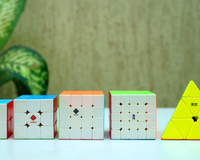

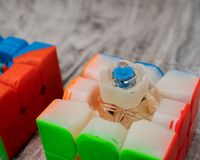
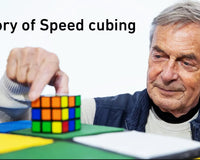
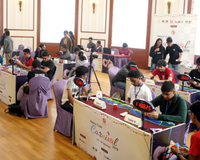











4 comments
abhi
in the roux method what is is a 1×2×3 block?
Unknown
It’s work? Try to find out
Unknown cube 666
Hey can you make a short tutorial for every method you showed here in this website?
Hrishikesh
Very good method but it is hard to understand